Are wider MTB handlebars better?

Of all the touchpoints and dimensions on a mountain bike, handlebar width and shape are perhaps the most important because, like a car without a steering wheel, a mountain bike without handlebars isn’t going anywhere.
- Best MTB handlebars - tried and tested trail bars
- The 10 best bar bags for off-road riding
- Best MTB grips 2023 - options to improve your comfort and handling
Riders are deeply personal in their choice of handlebars. Width is a foundational preference that makes it impossible for most riders to feel comfortable on a bike with handlebars only a few millimetres wider or narrower. It’s much the same with handlebar shape. Many riders can’t get comfortable with handlebars that feature a few millimetres of rise or a degree more backsweep than they are familiar with.
No matter which dimensions and shape your handlebars are, they’ve become wider from bike to bike if you’ve been riding since the late 1990s or early 2000s. And that’s a good thing, because handlebars were far too narrow, for far too long. The legacy influence of road cycling on mountain biking has been inarguable and, often, a constraint. Handlebar width is one of those strained road cycling legacies that constrained mountain bike development and riding comfort for decades.
How narrow is too narrow?
Road bike handlebars are narrow for aerodynamic reasons, which makes sense. There aren’t many desperately tight switchback corners on a road ride, and you don’t have to stabilise the bike through severe rock gardens or secure a landing with the handlebars.
Mountain bikes are ridden very differently, over terrain that requires a high frequency of handlebar inputs, responding to the more varied and demanding terrain. Rocks, roots and all manner of other trail features require a lot more handlebar input in a 15-mile mountain bike ride than you’d ever do on a 100-mile road ride.
On the open ski-slope slalom courses that defined 1990s mountain biking, narrow bars were valued for the same reason they are popular in road cycling: aerodynamic efficiency. But as frame, suspension and tyre technology improved, riders and course builders responded with more daring venues for mountain bike racing.
As the courses became narrower and littered with technical trail features and switchback corners throughout the 2000s, riders suddenly discovered the need for enhanced steering leverage to gain more effective bike control and turning agility. And that meant traditional mountain bike handlebars were way too narrow.
John Tomac’s 1994 Giant ATX is one of the most iconic mountain bikes of all time. It featured a 560mm wide handlebar, considered impossibly narrow by contemporary standards, where most pro racers grip handlebars that are nearly 30% wider.
Why wider is better
The difference between road and mountain biking terrain and riding styles means that off-road riders need wider handlebars, which create greater leverage and more steering control. They also provide a more solid platform for absorbing compressions, which are all to common throughout the average mountain bike trail.
Wider handlebars enhance stability and steering leverage while creating a more forgiving corrective steering dynamic on challenging terrain features. And the more time a rider has to respond to a complex rock garden or slightly off-balance landing, the greater the likelihood of retaining control and avoiding a crash.
You might think slower, more ‘forgiving’ steering responses would be worse, but a bike with narrow handlebars will steer too quickly and feel nervously twitchy. Riders want to respond to terrain inputs and flow through technical trail features instead of being ‘steered’ by terrain. To absorb rock gardens and textured trail surfaces, the stability of wider handlebars creates a more controlled steering experience.
A wide handlebar provides a strong platform for a rider to push against too. When the rider and the bike roll through compression (be it a berm, a roll or a jump), the upper body goes through a movement that's not too dissimilar from a pushup. Imagine trying to do a pushup with your hands close together on the floor - It's unstable and actually quite hard. Now try it with your hands wide apart - It's much more stable and easier on the arms. A wider stance utilises arm, chest and back muscles better in order to keep you upright on a bike, meaning that fatigue will set in later into a ride.
What is the ideal MTB handlebar width?
If the theme in mountain bike handlebars has been ‘wider’, has the industry discovered an ideal width? Like the question of frame size, it depends on rider measurements. A rider with a climber’s physique, at 5’8, will have very different ideal handlebar width requirements to someone who played amateur rugby and stands at 6’4.
Handlebar bar width can be understood as a spectrum, between extremes. Very few riders will feel comfortable with a handlebar narrower than 700mm unless they are very compact mountain bikers on XS or XXS custom frames. By the same logic, only the tallest riders might need an 800mm handlebar. It’s always a sound principle to reference pro riders with decades of elite racing experience as a guide to ideal handlebar size.
A rider who has done more than any other to create components for large mountain bikers, South Africa’s multiple downhill World Champion, Greg Minnaar, is 6’2. An early adopter of ultra-wide handlebars and a rider known for his obsession with technical detail, Minnaar rides a 780mm width on his trail and enduro bikes, and 800mm on his downhill race bike. He has experimented with 820mm but found it too wide.
If anything beyond 800mm is too wide for the greatest downhill mountain biker of all time, who has raced through three decades of mountain bike development, and anything under 700mm is too narrow for everyone but the smallest riders, what does that mean? You guessed it: the idea of a perfect compromise applies, which is 750mm as logic might dictate.
However, that logic isn't true. While it's definitely a case of personal preference, the best way to find your ideal bar width, or at least get a ballpark measurement is to get in your pushup position with a measuring tape beneath your palms. While in this position, make sure you've got full range of motion in your arms from straight to bent, as you'll be using this on the bike. Once you're happy, take the measurement from the outside edge of you're palms and you're good to go.
Scrutinise the factory build specification for most new mountain bikes in the cross-country or trail categories and for all but the XS and XXL sizes, the handlebar width is mostly in the 740- to 760mm. Long travel trail through to enduro and downhill will see bars from 780 to 800mm in width.
If you're looking to upgrade to a wider bar but are not sure of what a certain width might feel like, you can install your grips a few millimetres outboard. It's not recommended you ride with your grips installed like this, but it'll give you a solid idea of what to expect before dropping the cash on a new bar.
Of course, many bars can also be cut down to your preferred size but for the size-curious, try popping a bit of tape around your grips to effectively narrow your handlebar for an idea of how a narrower bar will feel before cutting.
Handlebar width and tree fallacy
The resistance some riders have about experimenting and going ‘wider’, is the assumed risk of clipping trees and crashing.
On the tightest forest singletrack trails, you could clip a handlebar end, but it’s improbable, and width is only part of the issue; rider skill and peripherical awareness are something to consider too. While many trees are being scored and unintentionally widened by riders skipping the ends of their bars as they blast by, a good portion of the fear of clipping a bar is simply that, fear. If you pick your lines correctly and focus on the trail ahead, the chances of clashing with a tree are minimized but never eradicated.
Of course, if you are regularly riding through super dense forests with tightly packed trees, a wide handlebar will just not be an option but adding 5- or 10mm of width to each end of your handlebars could benefit your steering control, but it won’t dramatically increase your risk of clipping a tree when riding densely wooded singletrack trails.

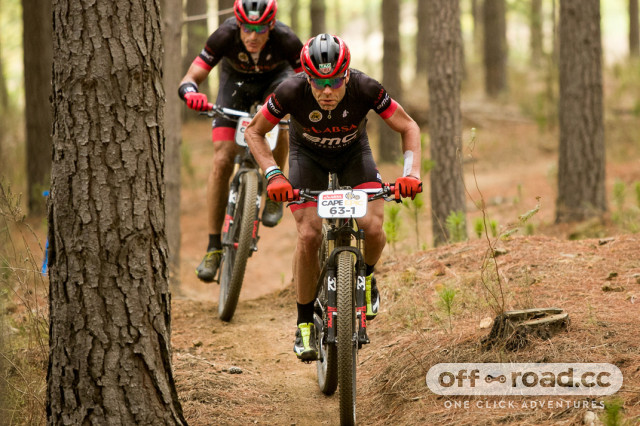

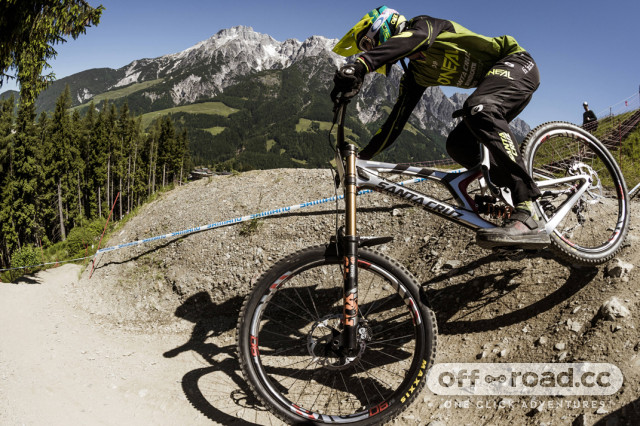
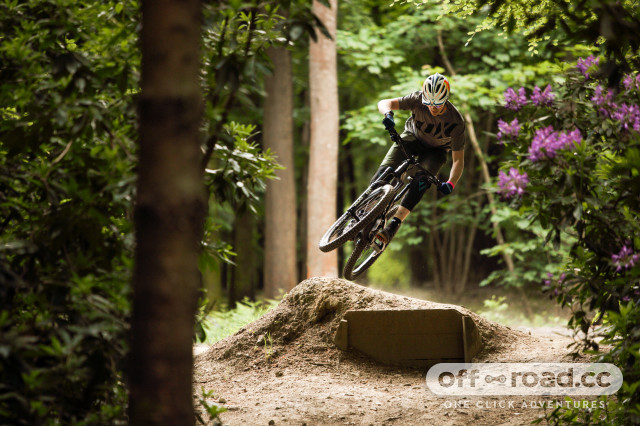


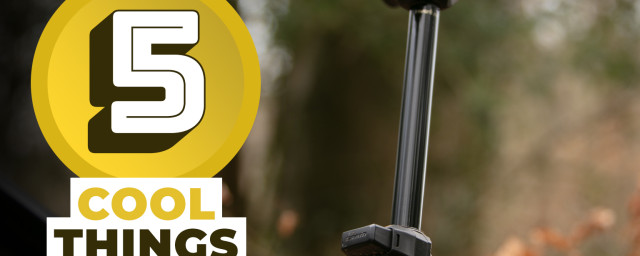
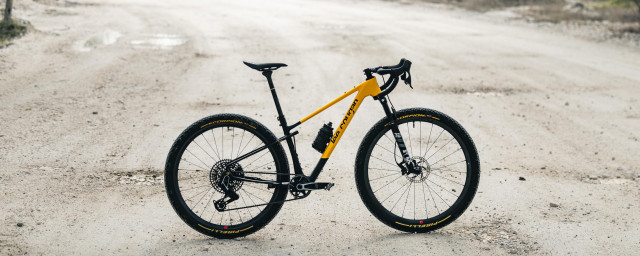


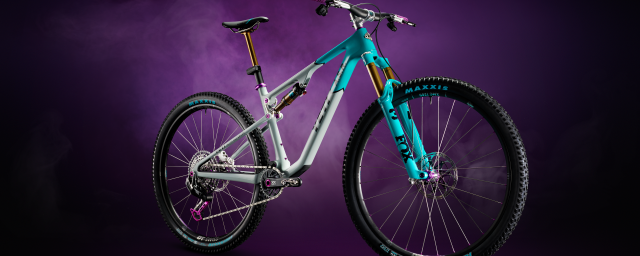
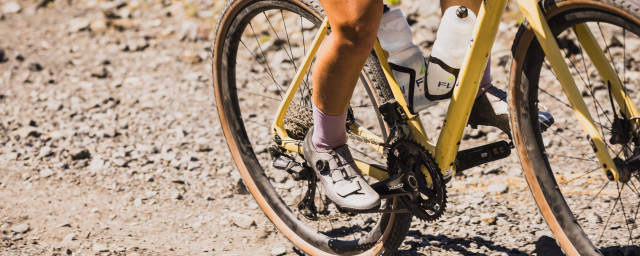

3 comments
For me (on the gravelly side of the MTB world) I found fitting SQLabs Innerbarends helpful. Gave me a range of positions whilst still providing leverage for the technical bits. Given issues with numb hands that was important otherwise I would have had to trim down my bars quite a bit to take pressure off the nerve feeding my thumb and forefinger.
Only half the story. Handlebar width and Stem length go hand in hand, because its the length of the diagonal (within limits) from the end of the bars to the center of rotation (the steerer tube) that counts.
You can get similar advantages to wide bars as by lengthening your stem - but because this is not fashionable and Manufacturers have to sell new "changed" bikes this has been forgotten. Narrow bars and longer stems will return if we wait long enough.
Such a long article, and still so much nuance missing.
Not everybody rides gnarly trails, a fact that most mtb media outlets always seem to forget. Many people like to just ride nice trails through nature, on hardtauls of fullies with limited trvel. Those people don't need these superwide handlebars, no matter their own size.
Yet, here in The Netherlands, I see most mountain bikers riding, what I call 'gorilla style'. Mega wide handlebars, looking totally uncomfortble and awkward.
Yes, back in the nineties we eventually went too far with the narrow bars, I readily admit that, but I think it's time others admitted that those wide bars have gotten a bit silly too.
i think it's simple; if it's a trail you can ride with a gravel bike, the wide handlebars on your mtb are too wide. I ride everything off-road with my 46cm wide (at the hoods) flared dirt drop bar, and on my bike messenger bike my slightly curved handlebars are 60cm wide. I never ever feel like I am lacking leverage, and i am no stranger to some silly stunts and jumps on my rides.